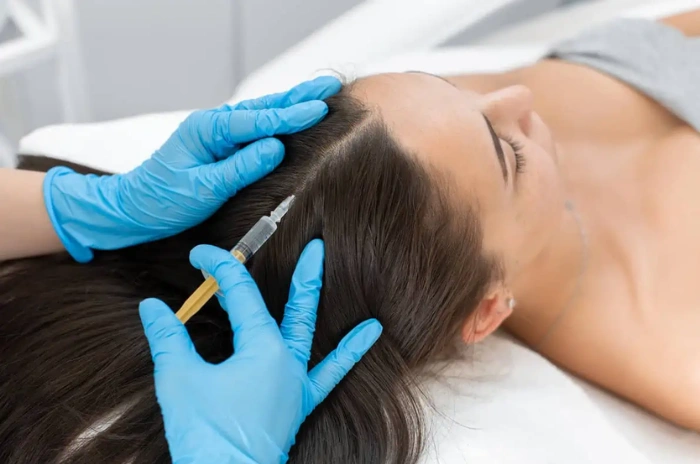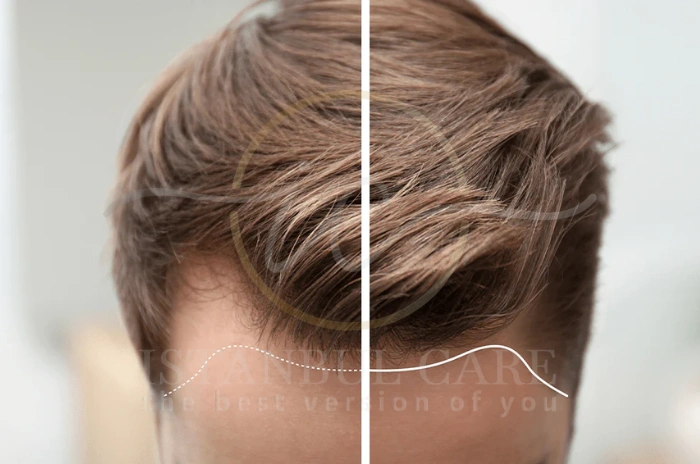Scalp reduction surgery represents one of the more aggressive surgical approaches to treating significant hair loss, particularly in cases where other treatments have proven insufficient and when evaluating best hair treatment hair loss options. This procedure involves surgically removing sections of bald scalp and stretching the remaining hair-bearing skin to cover the area. While less commonly performed today due to advances in hair transplant techniques, scalp reduction surgery remains a viable option for specific cases of extensive hair loss.
The procedure works by physically reducing the amount of bald scalp area, effectively bringing hair-bearing regions closer together. During scalp reduction surgery, surgeons carefully remove sections of hairless skin from the crown and vertex areas, then use specialized techniques to stretch and reposition the remaining scalp tissue.

Effective Hair Loss Treatments Backed by Medical Science
Medical science has validated several hair loss treatment options through rigorous clinical testing and long-term studies. The most established treatments include FDA-approved medications, surgical procedures, and emerging therapies that target different mechanisms of hair loss. Research consistently shows that early intervention produces the best outcomes, regardless of the chosen treatment approach.
| Treatment Type | Timeline for Results | Side Effects | Permanence |
|---|---|---|---|
| Minoxidil (Rogaine) | 3-6 months | Scalp irritation, initial shedding | Requires continuous use |
| Finasteride (Propecia) | 3-6 months | Sexual dysfunction (2-5%), mood changes | Requires continuous use |
| Hair Transplant (FUE/FUT) | 6-12 months | Scarring, infection risk, temporary swelling | Permanent |
| Scalp Reduction Surgery | Immediate coverage | Scarring, tight scalp sensation, hair direction changes | Permanent |
| PRP Therapy | 3-6 months | Mild pain, temporary swelling | Requires maintenance |
| Low-Level Laser Therapy | 4-6 months | Minimal, occasional headaches | Requires continuous use |
Treatment Selection Guide:
- Early Hair Loss: Start with Minoxidil + Finasteride combination
- Moderate Hair Loss: Add PRP therapy or laser therapy to medications
- Advanced Hair Loss: Consider hair transplant surgery
- Extensive Crown Baldness: Scalp reduction or multiple hair transplant sessions
- Women: Minoxidil + Spironolactone (if hormonal factors present)
Minoxidil for hair loss stands as one of the most thoroughly researched topical treatments, with decades of clinical data supporting its effectiveness. Originally developed as a blood pressure medication, researchers discovered its hair growth properties accidentally, leading to extensive studies that confirmed its ability to stimulate hair follicles and extend the growth phase of existing hair.
Finasteride for hair loss represents another cornerstone of medical treatment, working by blocking the hormone DHT (dihydrotestosterone) that causes pattern baldness. Clinical trials demonstrate that finasteride can halt hair loss progression in approximately 85% of men and promote regrowth in about 65% of users. This oral medication requires consistent daily use to maintain benefits.
Surgical interventions like hair transplant surgery provide permanent solutions by relocating healthy hair follicles from donor areas to balding regions. Modern techniques such as Follicular Unit Extraction (FUE) and Follicular Unit Transplantation (FUT) offer natural-looking results with minimal scarring when performed by experienced surgeons.
How Minoxidil and Finasteride Can Help Combat Hair Loss
Minoxidil for hair loss functions as a vasodilator, improving blood circulation to hair follicles and extending the anagen (growth) phase of the hair cycle. Available in 2% and 5% concentrations, with the higher strength typically reserved for men, minoxidil requires twice-daily application for optimal results. Most users begin seeing improvements after 3-4 months of consistent use.
The mechanism behind Rogaine minoxidil involves opening potassium channels in cell membranes, which increases blood flow and nutrient delivery to hair follicles. This enhanced circulation helps revitalize miniaturized follicles and can reverse some of the effects of androgenetic alopecia.
Finasteride for hair loss, marketed as Propecia finasteride, blocks the enzyme 5-alpha-reductase that converts testosterone to DHT. By reducing DHT levels by approximately 70%, finasteride prevents further follicle miniaturization and can reverse some existing damage.
Side effects of finasteride include potential sexual dysfunction in approximately 2-5% of users, though these effects typically resolve after discontinuation. Side effects of minoxidil are generally limited to scalp irritation, though some users may experience initial increased shedding as weak hairs are replaced by stronger ones.
Exploring Hair Transplant Surgery as a Permanent Solution
Hair transplant surgery offers the most permanent solution for pattern baldness by relocating genetically resistant hair follicles from the back and sides of the scalp to balding areas. These transplanted follicles retain their original characteristics and continue growing naturally in their new location, providing lifetime results that require no ongoing medication.
Modern hair transplant surgery techniques focus on creating natural hairlines and achieving optimal density through precise follicle placement. The FUE method extracts individual follicular units using specialized punches, leaving tiny circular scars that are virtually undetectable. FUT involves removing a strip of scalp from the donor area, which is then dissected into individual grafts under microscopic magnification.
Hair transplant risks include infection, bleeding, scarring, and unnatural appearance if performed by inexperienced practitioners. Selecting a qualified surgeon with extensive experience in hair restoration significantly reduces these risks.

Top Medical Solutions for Thinning Hair and Baldness
Baldness treatment options have expanded significantly with advances in medical technology and understanding of hair loss mechanisms. Beyond traditional medications and surgery, patients now have access to combination therapies that address multiple factors contributing to hair loss simultaneously.
Dutasteride for hair loss represents a more potent alternative to finasteride, blocking both Type I and Type II 5-alpha-reductase enzymes. While not FDA-approved for hair loss in the United States, dutasteride shows superior DHT suppression and may benefit patients who don’t respond adequately to finasteride.
Spironolactone for hair loss primarily benefits women with androgenetic alopecia by blocking androgen receptors and reducing testosterone production. This medication proves particularly effective for women with hormonal imbalances contributing to their hair loss pattern.
Low level laser therapy for hair loss uses specific wavelengths of light to stimulate cellular activity in hair follicles. FDA-cleared devices provide a non-invasive treatment option that can complement other therapies, though results vary significantly among individuals.
Platelet-Rich Plasma PRP Therapy for Hair Regrowth
PRP therapy harnesses the body’s natural healing mechanisms by concentrating platelets from the patient’s own blood and injecting them into the scalp. These platelets release growth factors that can stimulate dormant hair follicles and improve hair density over time.
The PRP therapy process involves drawing blood, separating platelets through centrifugation, and injecting the concentrated plasma into areas of thinning hair. Most practitioners recommend a series of 3-4 treatments spaced 4-6 weeks apart, followed by maintenance sessions every 6-12 months.
Research on PRP therapy shows promising results, particularly when combined with other treatments like minoxidil or hair transplant surgery. Studies indicate improvements in hair count, thickness, and growth rate, though individual responses vary considerably based on factors like age, extent of hair loss, and overall health.
Best Shampoos and Products to Reduce Hair Loss
Best shampoo for hair loss formulations typically contain ingredients that support scalp health and create optimal conditions for hair growth. Ketoconazole shampoos offer antifungal properties that may help reduce scalp inflammation and complement other hair loss treatments.
Caffeine-containing shampoos have gained popularity based on studies suggesting that topical caffeine can stimulate hair follicles and counteract some effects of DHT. While not as potent as medical treatments, these products may provide modest benefits as part of a comprehensive approach.
Hair loss prevention through proper hair care involves gentle handling, avoiding excessive heat styling, and maintaining optimal scalp conditions. Harsh chemicals, tight hairstyles, and aggressive brushing can accelerate hair loss in predisposed individuals.
Nutritional supplements supporting scalp health include biotin, iron, zinc, and vitamins D and B-complex.
What Hair Loss Treatments Work Best
The most effective hair loss treatment approach typically combines multiple modalities tailored to individual patient needs and preferences. Medical treatments like minoxidil and finasteride form the foundation for most treatment plans, while surgical options provide permanent solutions for advanced cases.
Hair loss diagnosis tests help identify underlying causes and guide treatment selection. These may include blood test for hair loss to check hormone levels and nutritional status, pull test hair loss to assess hair shaft strength, scalp biopsy hair loss for detailed follicle examination, and light microscopy hair shaft analysis to detect structural abnormalities.
Hormonal hair loss treatment requires addressing underlying endocrine imbalances that may contribute to hair loss patterns. Women with PCOS, thyroid disorders, or other hormonal conditions often benefit from treating these underlying issues alongside targeted hair loss therapies.
For patients with extensive hair loss who aren’t surgical candidates, wigs for hair loss provide immediate cosmetic solutions while other treatments take effect.
What are the Types of Hair Loss?
- Androgenetic Alopecia
- Alopecia Areata
- Telogen Effluvium
- Anagen Effluvium
- Traction Alopecia
- Scarring Alopecia
How Can I Prevent Hair Loss?
- Maintain a balanced diet rich in proteins and vitamins
- Avoid tight hairstyles
- Use gentle shampoo for hair loss
- Manage stress levels
- Regular scalp massages with rosemary oil for hair
Speak with our expert Hair Transplantation specialists

Speak with our expert Hair Transplantation specialists
We’re ready to answer your questions
FAQs for Best Hair Treatment Hair Loss Effective Solutions
The most effective hair loss treatments include FDA-approved medications like minoxidil and finasteride, hair transplant surgery for permanent results, and combination therapies that address multiple aspects of hair loss simultaneously.
Minoxidil for hair loss improves blood circulation to follicles and extends the growth phase, while finasteride for hair loss blocks DHT hormone production that causes follicle miniaturization and progressive hair loss.
Hair transplant surgery provides permanent results because transplanted follicles retain their genetic resistance to balding, continuing to grow naturally in their new location for a lifetime with proper surgical technique
Best shampoo for hair loss products can support overall scalp health and may provide modest benefits when combined with medical treatments, though they cannot stop genetic hair loss patterns on their own.

